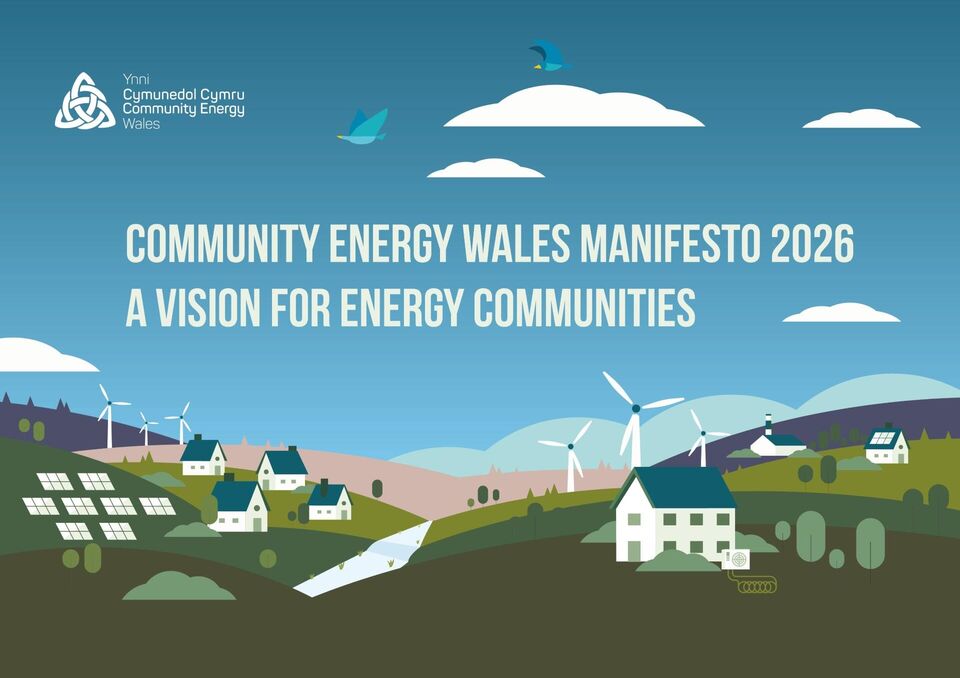Subscribe to our mailing list
If you’d like to keep up to date with all the news and activities from Community Energy Wales, sign up below. We won’t share your details with anyone else, and you can unsubscribe at any time.
Recent graduate Grace James responds to our manifesto for the Senedd elections in 2026.

The world is changing.
The effects that we, as a species, have had on the planet will shape the way our lives look in the future, no matter what we do next. But if we are serious about mitigating the effect and adapting to climate change, we need to do it in a way that is fair and works for communities, not against them.
That’s why, when I was asked to respond to Community Energy Wales’s 2026 manifesto, I was very keen to says yes, which sets out a vision for how the green transition can be community-led, fair, and empowering.
So, What Does the Manifesto Aim to Do?
Community Energy Wales argues that the green transition must be more than just building infrastructure. Their manifesto calls for a Community Energy Act. This will include the creation of:
a. a Community Wealth Fund,
b. a Natural Resources Levy and
c. meaningful shared ownership.
It’s a vision that recognises the potential of community-owned energy to improve the economic fortunes of Welsh communities.
What Do I Actually Think?
As someone who has just graduated in Geography, one of the key lessons I’ve learned is that everything is interconnected. Climate change impact more than our environment; it ripples into our politics, our economy, and our wellbeing. That’s why I find this manifesto so refreshing: it acknowledges that the transition has to be about people as much as it is about technology and the environment.
When I began researching renewable energy projects in Cymru, I quickly discovered that many were planned and executed without meaningful community involvement. Large-scale projects such as wind farms or pylons concentrated in one area can disrupt tourism, increase noise pollution, and affect people’s livelihoods. The benefits are often enjoyed by those far removed from these impacts, while locals are left to deal with the downsides.
That’s why community energy is exciting. It allows local people to own the infrastructure, share in the profits, and crucially, have a say in what gets built and where. Take Powys, for example: many residents are deeply concerned about wind farms disrupting their way of life. With a community-led approach, alternatives like solar farms on local buildings, or better siting of projects, could be discussed openly. The point is not that one solution fits all, but that communities deserve to be part of the conversation.
Why This Matters
What strikes me most is the manifesto’s simplicity. It makes the process of including communities sound straightforward, and that is how it should be. From my (granted limited) experience, when you bring people on board early, give them information, and empower them to make decisions, things tend to go much more smoothly.
I also admire the proposal to create a working group that continually revisits community engagement. Change is constant, whether political, environmental, or social, and keeping communities at the heart of decision-making will help us adapt.
This gives me hope. Hope that here in Cymru, we are taking steps in the right direction.
Last Thoughts
If there’s one thing I’d like you to take away from this short piece, it’s this: there are systems being developed to support communities in Wales during the green transition, but they need political will to succeed.
The Community Energy Wales manifesto shows us that the transition doesn’t have to be about energy only, it can also be about justice, empowerment, and local pride. Our world is changing. Let’s make sure we change with it, and in a way that leaves no one behind.
You can read the manifesto here: Community Energy Wales Manifesto 2026